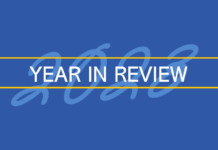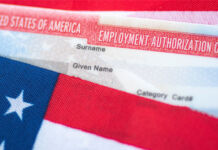
On Friday, March 27, 2020, the President signed the Coronavirus Aid, Relief, and Economic Security Act (“CARES Act”) into law, providing essential aid to individual citizens, small business, and substantially affected industries. The following summary provides an overview of tax-specific provisions affecting American businesses and individuals.
BUSINESS PROVISIONS
Employee Retention Credit for Employers
- The CARES Act provides a refundable payroll tax credit for each calendar quarter in an amount equal to 50% of the qualified wages paid to each employee after March 12, 2020 and before January 1, 2021.
- “Eligible Employers” include employers carrying on a business in 2020 and, with respect to any calendar quarter, (i) whose operations have been fully or partially suspended as a result of a government order limiting commerce, travel, or group meetings; or (ii) who have experienced a greater than 50% reduction in quarterly receipts, measured on a year-over-year basis. An employer is not eligible if it is receiving Small Business Interruption Loans
- “Qualified wages” are determined by the average number of full-time employees. For employers with 100 or fewer full-time employees in 2019, all employee wages are eligible. For employers with more than 100 full-time employees in 2019, only the wages of employees who are furloughed or face reduced hours are eligible. However, the amount of wages considered for each employee will not exceed $10,000 per calendar quarter.
Delay of Payment of Employer Payroll Taxes
- The CARES Act delays the due date for depositing (i) all employer payroll taxes related to Social Security and Railroad Retirement and (ii) 50% of self-employment taxes, as such taxes are attributable to wages paid during 2020.
- 50% of the deferred amounts must be deposited by December 31, 2021, and the remaining 50% by December 31, 2022.
- Note: These rules do not apply to any taxpayer which has had indebtedness forgiven under certain other provisions of the CARES Act with respect to certain small business loans.
Modification of Limitations on Losses
- Repeal of Limitation for Net Operating Losses (NOLs). Previously, a taxpayer’s ability to deduct NOLs was limited to 80% of the taxpayer’s taxable income. The CARES Act temporarily removes the 80% limitation for 2018, 2019, and 2020 allowing net operating losses to fully offset income for most taxpayers.
- Modification of NOL Carrybacks Rules. Previously not permitted, NOLs generated in tax years 2018, 2019 and 2020 can now be carried back to each of the 5 previous taxable years.
- Modification of Loss Limitations for Noncorporate Taxpayers. The Tax Cuts and Jobs Act (“TCJA”) limited the deduction of excess business losses, generally, to $250,000 for noncorporate taxpayers (e.g. individuals, trusts, and estates) between 2018 and 2025. The CARES Act suspends these limitations as applied to excess farm losses and the use of a pass-through business’ losses against nonbusiness income, so that the limits do not apply to tax years beginning in 2018, 2019, and 2020.
Modification of Business Interest Deduction Limitation
- The TCJA limited the amount of deductible business interest to 30% of adjusted taxable income. The CARES Act raises the limitation to 50% for tax years beginning in 2019 and 2020.
- For partnerships, the 50% limitation only applies to tax years beginning in 2020. Unless elected otherwise, special rules apply to any excess business interest of a partnership for a tax year beginning in 2019 that is allocated to a partner.
- An individual taxpayer or a partnership (but not an individual partner) may:
- elect out of the increased 50% limitation in any year which it applies, or
- elect to calculate the interest limitation for their tax year beginning in 2020 using the adjusted taxable income for their last tax year beginning in 2019 as the relevant base.
TCJA Technical Correction for Qualified Improvement Property
- The CARES Act corrects the TCJA and designates “qualified improvement property” (including certain leasehold, restaurant, and retail property) as 15-year property for depreciation purposes, thus making such qualified improvement property eligible for 100% additional first-year depreciation deductions.
INDIVIDUAL PROVISIONS
Recovery Rebates for Individuals
- The “recovery rebate” for individuals is applied as a refundable credit for taxes owed in tax year 2019. The amount paid to a taxpayer will equal $1,200 ($2,400 in the case of individuals filing a joint return) plus $500 for each of the taxpayer(s) qualifying children. The credit allowed is reduced as the taxpayer’s adjusted gross income increases.
- The rebates will be calculated based on the taxpayer’s 2019 tax return, if filed, or alternatively, their 2018 tax return. If no 2018 tax return was filed, the determination will be based on other information.
- Most eligible individuals will note have to take any action to receive an advance rebate from the IRS. Every taxpayer receiving a rebate will be mailed a notice at their last known address within 15-days of the IRS distributing the rebate payment.
- If the credit a taxpayer receives for 2019 is less than the rebate amount calculated for the 2020 tax year, the taxpayer will receive a credit for 2020 equal to the difference. This could occur, for example, if:
- taxpayer was not eligible for the credit in 2019 (e.g. a 17-year old dependent child), but becomes eligible in 2020, the full credit will be applied to the 2020 tax return; or
- a taxpayer’s 2020 credit amount increases (e.g. the birth of a child), that excess credit (here, $500) will be available on the 2020 tax return.
Special Rules for Retirement Plans
- Coronavirus-Related Retirement Plan Distributions
- A distribution from a qualified retirement plan is subject to a 10% additional tax unless the distribution meets certain exceptions. The CARES Act provides that any “coronavirus-related distribution” (up to $100,000) qualifies as an exception and will not have the 10% tax imposed.
- A “coronavirus-related distribution” is any distribution made on/after January 1 and before December 31, 2020 from an eligible retirement plan to an individual:
- who is diagnosed with virus SARS-CoV-2 or with COVID-19 by a CDC approved test,
- whose spouse or dependent is diagnosed with such a virus by such a test, or
- who experiences adverse financial consequences as a result of being quarantined, being furloughed or laid off or having work hours reduced due to such virus or disease, being unable to work due to lack of child care due to such virus or disease, closing or reducing hours of a business owned or operated by the individual due to such virus or disease, etc.
- Such a distribution can be contributed back to a qualified plan or an IRA within three years of receiving the distribution, so long as the account is one to which a rollover contribution could be made under the Internal Revenue Code of 1986, as amended (the “Code”). To the extent NOT repaid, such portion is typically required to be included as income for such tax year; however, the amount will instead be included ratably over a 3-year period beginning with such tax year.
- Loans from Qualified Plans.
- The CARES Act raises the limitation on loans from qualified employer plans to an individual made over the next 6 months from $50,000 to $100,000. In addition, due dates on such loans occurring during 2020 will be delayed for 1 year.
- Required Minimum Distribution (RMD) Rules Waived for 2020
- Generally, owners of retirement plans or IRAs are required to take RMDs annually once the owner reaches age 72. The CARES Act temporarily waives all RMDs for calendar year 2020 for defined contribution plans described in Code sections 401(a), 403(a) and (b), IRAs and section 457 plans.
Rules Related to Charitable Contributions
- Deduction for Charitable Contributions
- Generally, only available to taxpayers that elect to itemize deductions, the CARES Act allows taxpayers using the standard deduction to deduct cash contributions up to $300 to qualified charities (other than supporting organizations and donor advised funds) beginning in tax year 2020.
- Modification of Limitations on Charitable Contributions During 2020
- Generally, a taxpayer’s ability to deduct charitable contributions is limited to a percentage of the taxpayer’s “contribution base” (i.e., the taxpayer’s adjusted gross income).
- The CARES Act (i) removes that deductibility limitation for individuals, allowing deductions up to the amount of the taxpayer’s contribution base over the amount of all other charitable contributions and (ii) increases the limitation for corporations from 10% to 25% for cash contributions made in 2020 to charitable organizations (other than supporting organizations or donor advised funds). Contributions in excess of any limitation may be carried forward to the next 5 successive tax years.
- Note: The taxpayer must elect to apply this provision with respect to a contribution. In the case of S corporations and partnerships, an election must be made separately by each shareholder or partner.
- For contributions of food inventory pursuant to section 170(e)(3)(C) of the Code, the CARES Act also increases the deductibility limitation from 15% of a taxpayer’s aggregate net income (taxable income for a C corporation) to 25%.
Exclusion for Certain Employer Payments of Student Loans
- Certain employer-provided educational assistance is excluded from a taxpayer’s gross income up to $5,250 per year. The CARES Act expands the definition of qualifying educational payments to include “eligible student loan repayments” made during 2020 on any qualified higher education loan under Code section 221(d)(1).
- Repayments that qualify for this exclusion cannot also qualify as deductible student loan interest for the employee.





